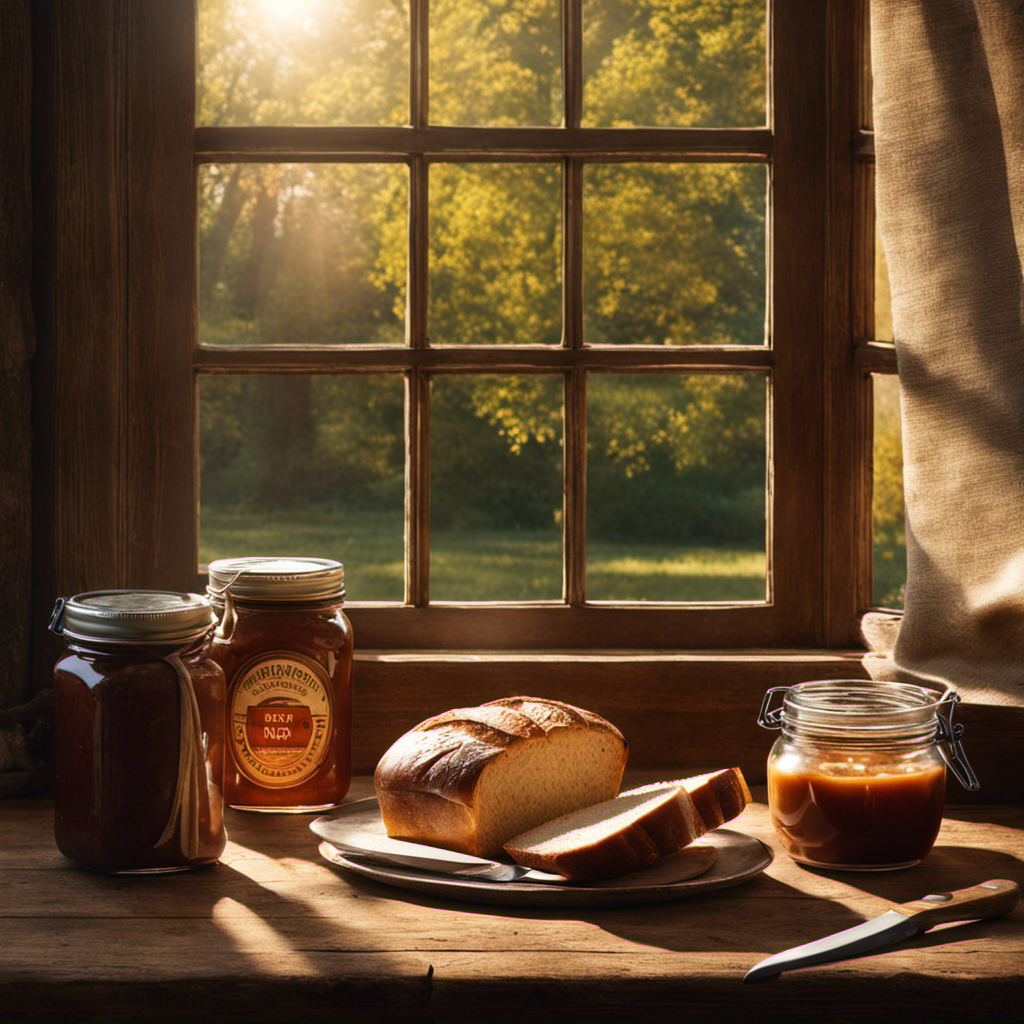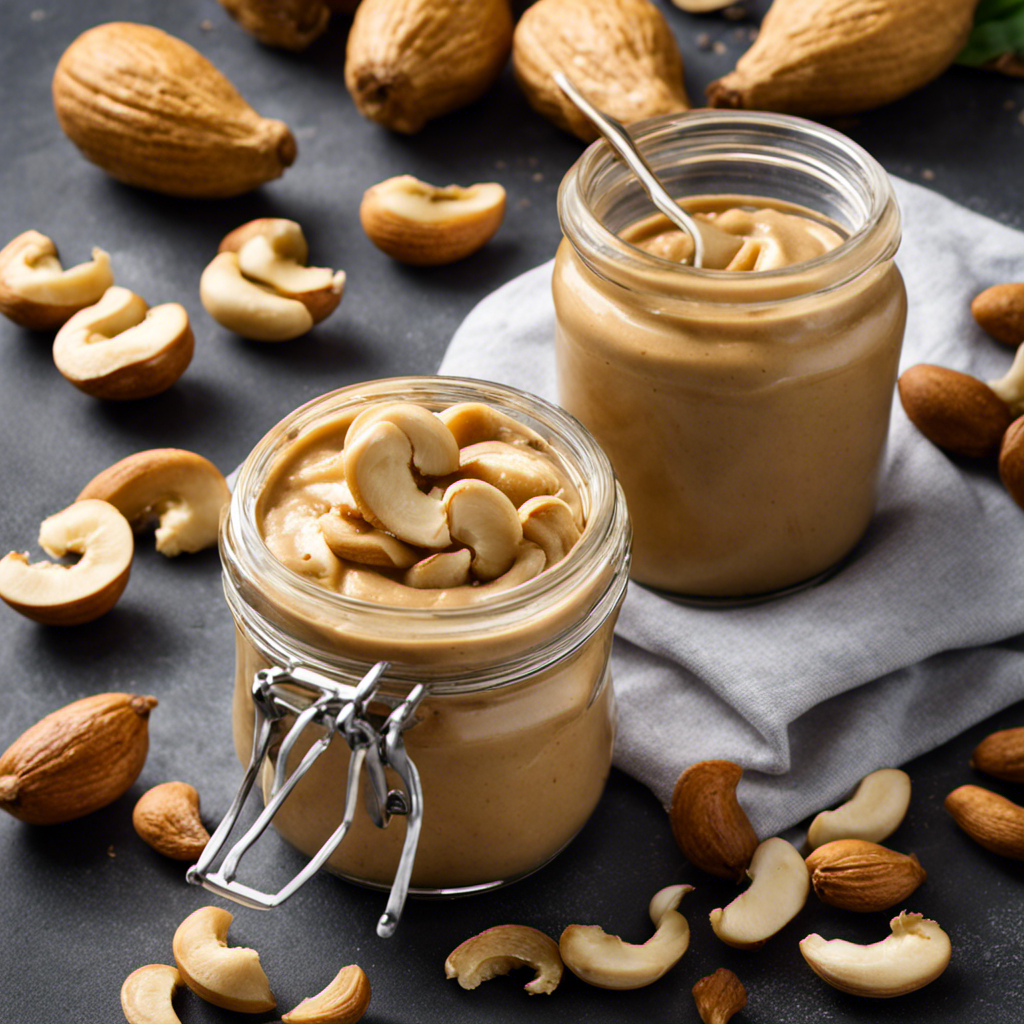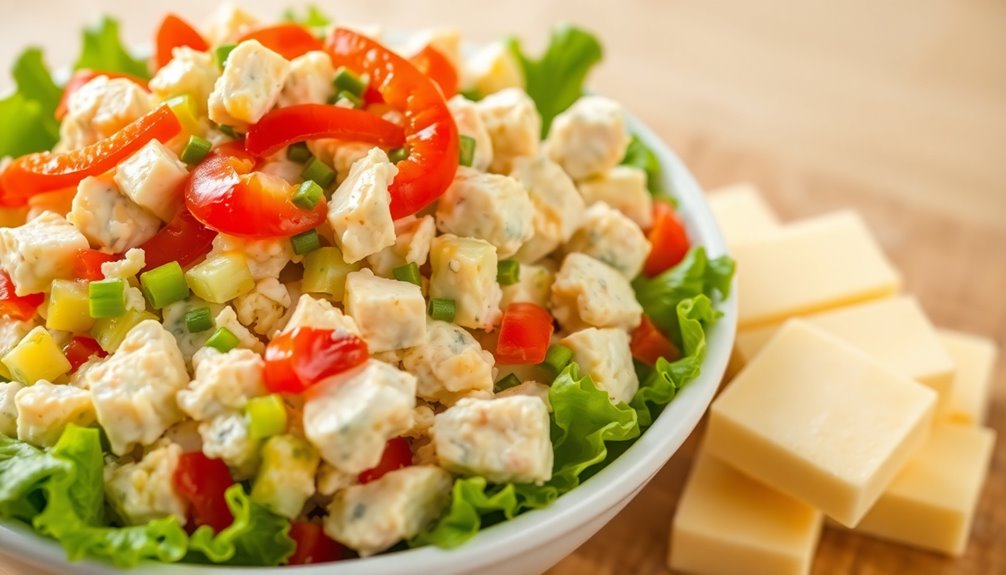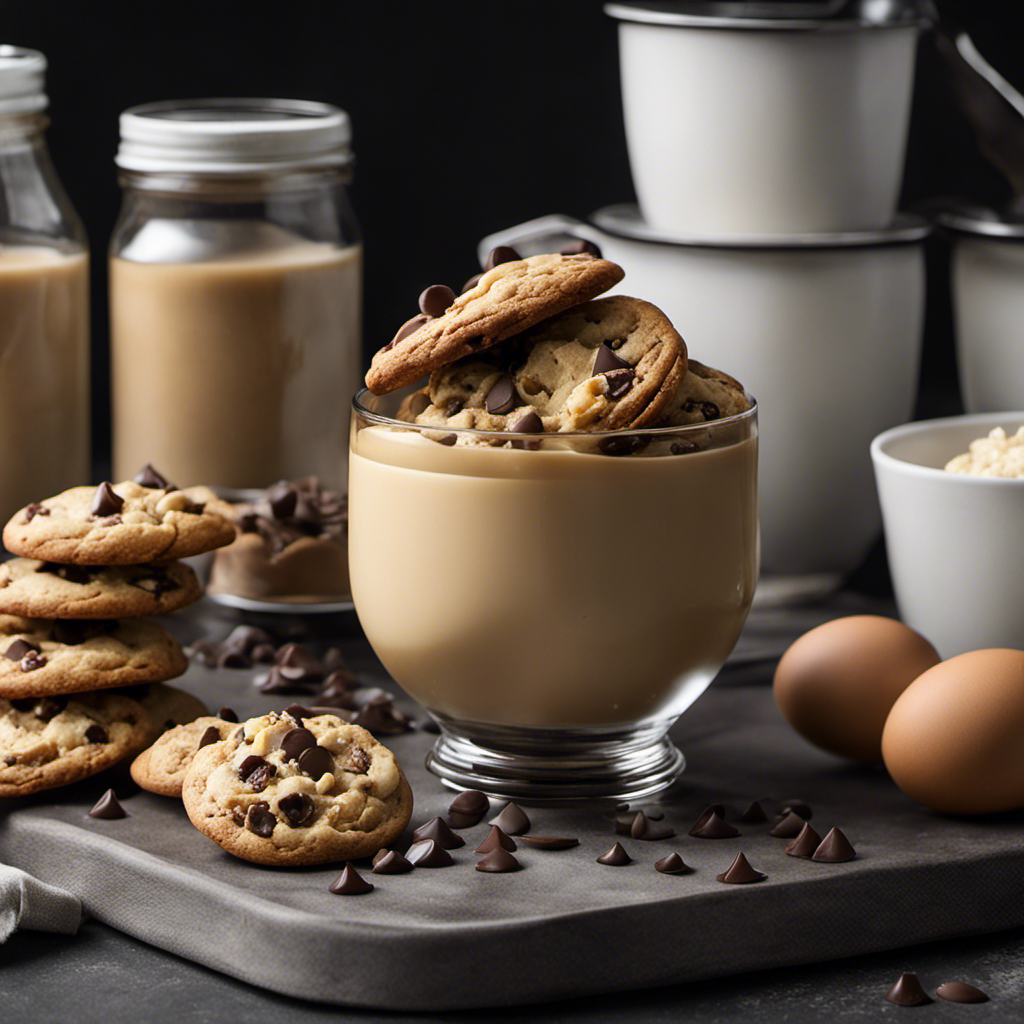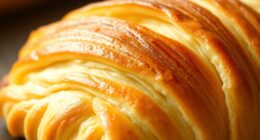As someone who loves apples, I’ve often pondered about what to do with that jar of apple butter sitting in my pantry.
Well, wonder no more! In this article, I’ll share a plethora of palatable possibilities for this delectable spread.
From mouthwatering recipes to unconventional pairings, prepare to embark on a journey of apple butter exploration.
Get ready to tantalize your taste buds and discover the unique and delightful ways to savor every dollop of this heavenly creation.
Key Takeaways
- Apple butter can be used in a variety of recipes, both sweet and savory.
- It pairs well with ingredients like sharp cheddar cheese, crusty bread, and fresh fruits.
- Apple butter can be used as a condiment, spread, glaze, or filling in dishes.
- It adds delicious flavor and enhances the taste of both desserts and savory dishes.
Delicious Apple Butter Recipes
I love trying out new recipes with apple butter – it adds such a delicious flavor to dishes! One of my favorite ways to use apple butter is in desserts. The rich, sweet taste of apple butter pairs perfectly with desserts like apple butter cookies or apple butter cake. Imagine biting into a soft, chewy cookie with a subtle hint of cinnamon and the sweet tang of apple butter. It’s heavenly!
But apple butter isn’t just limited to desserts. It also works wonders in savory dishes. For example, I love spreading apple butter on a grilled cheese sandwich for a touch of sweetness that balances the salty cheese. Or, try mixing apple butter into a homemade barbecue sauce for a unique twist on your favorite grilled meats.
The possibilities are endless when it comes to incorporating apple butter into your cooking!
Creative Ways to Use Apple Butter
One of my favorite ways to get creative in the kitchen is finding new uses for this delicious spread. Apple butter isn’t just meant for spreading on toast or biscuits; it can be used to create incredible desserts and cocktails.
Imagine a warm apple butter tart, with a buttery crust and a smooth, sweet filling that melts in your mouth.
Or how about an apple butter cheesecake, with a graham cracker crust and a swirl of creamy apple goodness throughout?
For those who prefer a liquid treat, apple butter can be the star of a refreshing cocktail. Mix it with bourbon and ginger beer for a spicy twist on a classic mule, or blend it with rum and ice for a fruity frozen daiquiri.
The possibilities are endless when it comes to apple butter!
Apple Butter Pairings and Combinations
After experimenting in the kitchen, I discovered that apple butter pairs beautifully with sharp cheddar cheese and crusty bread for a delicious and savory snack. The combination of the creamy apple butter with the sharpness of the cheddar creates a perfect balance of flavors. The sweetness of the apple butter complements the tanginess of the cheese, while the crusty bread adds a satisfying crunch to each bite.
But the versatility of apple butter doesn’t stop there. Here are a few more creative ways to use this delicious spread:
- Spread apple butter on pancakes or waffles for a sweet and fruity twist.
- Use apple butter as a glaze for roasted meats like pork or chicken.
- Incorporate apple butter into baked goods like muffins or cookies for a moist and flavorful treat.
Apple butter truly is a versatile ingredient that adds a burst of flavor to a variety of dishes. Whether you’re enjoying it with cheese and bread or using it in your favorite baked goods, apple butter is sure to delight your taste buds.
Apple Butter as a Condiment or Spread
When using apple butter as a condiment or spread, it adds a burst of flavor to any dish. Whether you’re looking for a sweet treat or a savory delight, apple butter can elevate your culinary creations. As a dessert component, apple butter can be swirled into cake batter or used as a filling for pies and tarts. Its rich and caramelized taste adds depth to every bite. On the savory side, apple butter can be used as a glaze for roasted meats or a topping for grilled sandwiches. The possibilities are endless. To give you some inspiration, here’s a table showcasing a few mouthwatering apple butter desserts and savory dishes:
| Apple Butter Desserts | Apple Butter Savory Dishes |
|---|---|
| Apple Butter Cinnamon Rolls | Apple Butter BBQ Chicken |
| Apple Butter Cheesecake | Apple Butter Glazed Pork |
| Apple Butter Bread Pudding | Apple Butter Bacon Burger |
| Apple Butter Thumbprint Cookies | Apple Butter Brussels Sprouts |
| Apple Butter Tart | Apple Butter Grilled Cheese |
As you can see, apple butter can be a versatile and delicious addition to any meal. So go ahead, get creative, and explore the wonderful world of apple butter!
Unique Uses for Apple Butter
As I explore unique uses for apple butter, I’m amazed by the endless possibilities it offers in enhancing the flavors of both sweet and savory dishes. This versatile condiment adds a delightful twist to traditional recipes and opens doors to new culinary adventures.
Here are some unexpected apple butter pairings that will take your taste buds on a delightful journey:
-
Spread apple butter on a grilled cheese sandwich for a sweet and savory combination that will leave you craving for more.
-
Mix apple butter with cream cheese and use it as a dip for fresh fruits or pretzels. The creamy sweetness perfectly complements the crispness of the fruits and the saltiness of the pretzels.
-
Incorporate apple butter into your favorite barbecue sauce recipe for a tangy and slightly sweet glaze that will elevate your grilled meats and veggies to a whole new level.
When it comes to baking and desserts, apple butter is a secret ingredient that can transform ordinary treats into extraordinary indulgences. Try these delectable ideas:
-
Replace some of the sugar in your apple pie filling with apple butter for a deeper, more complex flavor.
-
Swirl apple butter into your favorite brownie batter for a burst of fruity goodness in every bite.
-
Spread a layer of apple butter between cake layers or mix it into frosting for a unique twist on classic flavors.
With its rich, velvety texture and sweet yet tangy taste, apple butter is a culinary gem that can elevate any dish to new heights. Get creative, experiment, and let the magic of apple butter surprise and delight you.
Frequently Asked Questions
How Can I Make Apple Butter at Home?
To make apple butter at home, you’ll need a few simple ingredients and a lot of patience. Start by peeling and slicing your choice of apples (I recommend using Granny Smith or Jonathan apples for the best results).
Then, cook them down with sugar, spices like cinnamon and nutmeg, and a splash of apple cider. Let it simmer for hours until the mixture thickens and becomes a rich, velvety spread.
Check out some apple butter recipes online for detailed instructions.
Can Apple Butter Be Used as a Substitute for Butter in Baking Recipes?
Can apple butter be used as a substitute for butter in baking recipes?
Well, let me tell you, my friend, apple butter isn’t just any ordinary spread. It’s a versatile ingredient that adds a unique twist to your baked goodies. Not only does it bring a burst of flavor, but it also offers some health benefits.
With its natural sweetness and smooth texture, apple butter can replace butter in certain recipes, creating a delightful and healthier alternative.
What Is the Shelf Life of Apple Butter?
The shelf life of apple butter can vary depending on how it’s stored. When made at home, it can last up to a year if stored in a cool, dark place. However, once opened, it should be refrigerated and consumed within a month for optimal freshness.
As for homemade recipes, apple butter can be used in a variety of ways such as spreading it on toast, swirling it into yogurt, or even incorporating it into baked goods for a delicious twist.
Can Apple Butter Be Frozen for Long-Term Storage?
Can apple butter be frozen for long-term storage? Absolutely!
Freezing apple butter is a fantastic way to preserve its deliciousness for months to come. Just imagine the joy of cracking open a jar of frozen apple butter in the dead of winter and spreading it on warm toast.
The freezing process keeps the flavors intact, ensuring that each bite is bursting with sweet, tangy goodness.
Is Apple Butter Suitable for Individuals With Dietary Restrictions, Such as Vegan or Gluten-Free Diets?
As a vegan, I was thrilled to discover that apple butter is suitable for individuals with dietary restrictions like vegan or gluten-free diets. There are countless delicious vegan apple butter recipes that cater to our needs.
For those who are gluten-free, there are also gluten-free apple butter alternatives available. These options ensure that everyone can enjoy the rich and flavorful taste of apple butter, no matter their dietary restrictions.
Conclusion
In conclusion, apple butter is a versatile and delicious ingredient that can be used in a variety of creative ways.
From spreading it on toast or pancakes to incorporating it into savory dishes like pork chops or grilled cheese sandwiches, the possibilities are endless.
Its rich and velvety texture, combined with its sweet and tangy flavor, make apple butter a culinary gem that can elevate any meal to new heights.
So go ahead and indulge in the sweet embrace of apple butter, and let your taste buds dance with delight.
